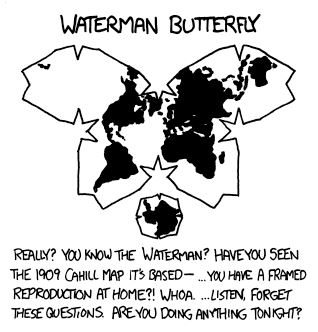

I love that the question doesn’t specify what “better” means, and we’re all interpreting it in our own ways. Healthier? More enjoyable?


I love that the question doesn’t specify what “better” means, and we’re all interpreting it in our own ways. Healthier? More enjoyable?
No.
Autocracy moves faster at marshaling the resources it has, but is significantly worse at accumulating resources than what economists Daron Acemoglu, James Robinson, and Simon Johnson describes as inclusive political and economic institutions, which broadly allow members of the public to engage in political and economic activity. (Note that their work on these things won them the Economics Nobel last year.)
Distributed, decentralized power is important for maximizing the potential of a population.
Autocratic political systems are brittle. They’re also poor. They tend not to survive more than a decade or two before the strongman is deposed, one way or another, whether from internal coup or revolution, or simply external invasion of a weakened state. And a successor strongman might be weaker. All the while, the inclusive states continue to grow in their own power and influence.
So any short term gain in consolidating power into smaller groups is going to be up against time, and the fragility of the whole arrangement as the autocratic country falls behind its competition.
Glasses make me look weak. They’re like a wheelchair for the eyes.


I’m going to answer from the perspective of U.S. law, because that’s what I know.
age is a protected class
The idea of protected classes comes from whether Congress or a state legislature protected that class by passing a valid law prohibiting that kind of discrimination. We can describe that generally with protected classes, as a broad summary, but if you’re actually going to get into the weeds of whether some kind of discrimination is legal or not you have to figure out the specific laws.
First, you have to ask what the context is. Is this employment discrimination? Public accommodations discrimination? Housing discrimination? Education discrimination? Each is governed by its own laws. For example Title VII prohibits employment discrimination on the basis of race, color, sex, religion, or national origin. Title VI has the same protected classes, but applies in programs and activities that receive federal financial assistance (like universities and hospitals and others). The Equal Credit Opportunity Act prohibits discrimination in providing credit on the basis of race, color, religion, national origin, and sex (like the Civil Rights Act) and adds on marital status, age, receipt of public assistance.
The Fair Housing Act prohibits discrimination on the basis of race, color, national origin, religion, sex, family status, or disability.
The Americans with Disabilities Act and the Rehabilitation Act add protections for discrimination on the basis of disability.
The Pregnancy Discrimination Act prohibits discrimination on the basis of pregnancy, and the Age Discrimination in Employment Act prohibits discrimination against those over 40 on the basis of age.
So if you’re talking about neighborhoods, you’re only looking at housing discrimination, and not public accomodations or employment or schooling or anything like that. The Fair Housing Act doesn’t prohibit housing discrimination on age. The Age Discrimination in Employment Act doesn’t apply to housing discrimination (and is one of the few that only goes one way, in protecting only people above 40).
How is that not the same as an “active white living” community that bans other races?
Because the Fair Housing Act prohibits whites-only neighborhoods, or any other kind of race discrimination in housing.
On a side note, there’s also constitutional Equal Protection claims for governmental discrimination that comes from the Constitution rather than any law passed by Congress. Those aren’t discussed in terms of “protected” class, but rather in “suspect class,” where non-equal treatment on the basis of race, color, or religion is reviewed by the courts with “strict scrutiny” (and almost always struck down). Unequal treatment on the basis of sex or citizenship is subject to “intermediate scrutiny,” which sometimes survives court review. Unequal treatment on the basis of pretty much anything else, though, gets “rational basis” review and basically survives if the government can come up with any rational reason for the rule.
Unfortunately, Evan Wright, the author of the book (which was adapted to the show you’re talking about) also committed suicide earlier this year. He had quite the career.


Your whole baseline assumption in this thread is that most people are raised in an environment where they are likely to reach their full genetic potential. That’s an assumption that isn’t true in most populations.
If you have a population that has poor childhood nutrition, they won’t grow to be as tall as if they had proper access to good food. If you have a heterogenous population where some have access to good nutrition and some don’t, then the distribution of heights in that population will be less genetically determined than if they were all equally fed good nutrition.
Or, for another example, we know the number of fingers a person has is coded in their genes. But if you actually go perform a survey of the population to see how many fingers they have, and you collect their genomes, you wouldn’t be able to correlate those observed outcomes to genomes, because pretty much everyone who has a number of fingers other than 10 got that way through something environmental (perhaps prenatal development, often an industrial accident or something). So the heritability of the number of fingers is actually close to zero.
Same with sports or fitness: rank the population by how fast they can run 5k, and you’ll find out basically nothing about their genetics from those results. The variance in outcomes is utterly dominated by how much they actually run and train, not their genetic potential.
Turning to intelligence, that same phenomenon plays out. Childhood lead exposure, childhood nutrition, access to education (including mentorship and social support for learning), family stability, external stressors (and the accompanying internal changes to one’s endocrine system and brain development in high stress environments), all contribute to intelligence. And certain traits that do affect intelligence are less heritable than others (e.g., certain cognitive conditions). All those factors put together in the real world “experiment” of how humans grow up differently mean that even if intelligence were highly heritable in a homogenous environment, the differences in people’s environments would still get a wide distribution of outcomes due to non-genetic factors.


They’re killing the middle class though
Some schools might be, but not places like Chicago or Harvard. At least not through their tuition policies. They give financial aid to those up to a pretty high income threshold.
UChicago, for example, gives free tuition to anyone who is the first in their family to attend college, or makes less than $125k a year. Harvard, as I mentioned, essentially gives free tuition up to $150k. MIT’s threshold is $200k. Families in these income ranges are doing pretty well for themselves.
And then when students graduate from these schools they have a pretty easy path to being rich themselves. The degree, the connections, and possibly the education itself provided a pathway towards six figure jobs, maybe $200k+, before the age of 30.
So no, I think these schools are a pretty good value proposition for even the middle class. Upper middle class has to pay the highest percentage of their own income, but it’s still worth the cost for them.


All the schools rip off the rich to subsidize the middle class. You’re essentially subsidizing a bunch of students who are paying close to nothing.m, because you can afford $70k tuition.
As another example, Harvard is free for anyone whose family makes less than $85k per year. Not just the tuition ($56k per year), but also the housing (worth $13k), food ($8k), health insurance ($1600), books, and a modest living stipend designed to cover things like a computer, commuting/travel, other expenses.
And those who make up to $150k per year are capped at 10% of their income to pay for all that. In the end, the average cost of Harvard for the typical student is about $15,000 per year including housing and food.
In other words, attending Harvard is cheaper than not attending school for anyone whose families make less than $150k, which is basically 75% of the nation. So if you’re actually paying full tuition, you’re probably pretty rich.


The hilarious thing was that she was actually acquitted of scamming patients. She was only convicted of scamming investors for claiming that patients could be treated using false tests.


The state of passenger rail in the United States on lines that don’t serve New York City is pretty pathetic, so I’d think that an increase in the number of New York passengers, by itself, would actually represent a significant increase in the total number of passengers, nationally.
Hiroshima’s bomb was Little Boy, which contained 64 kg of uranium, which at 19.1 g/cm^3 would be about 3.3 liters, significantly larger than a cricket ball.
But Nagasaki’s Fat Man used about 6.2 kg of plutonium, which has roughly the same density as uranium, although the implosion mechanism to initiate the chain reaction compressed it to about half the volume. So that’s closer to a cricket ball.
But also to add even more nuance, the plutonium in Fat Man used a uranium tamper to reflect neutrons, and estimates are that about 30% of the explosion yield was due to fission of the uranium too. So it’s hard to really draw the line on what was or wasn’t the “explosive” in that bomb.


and the seats were only a little bit bigger than economy flight seats
I find them to be much larger, comparable to business class on an airplane. It’s much, much easier for me to get work done on a laptop (or eat a meal) on an Amtrak train than on economy seats, or even economy plus seats. Plus having a lot more aisle space to walk around is huge.


The CEO is just saying “people want to take the train”. Oh, really? That’s what you think, guy who stands to profit if people take the train?
It’s not the CEO, it’s the chair of the board of directors. Amtrak is government chartered and majority owned by the US government, and its board of directors are appointed by the President and confirmed by the Senate, essentially making it a government position.
And it’s two paragraphs out of like 10, where several other experts were interviewed and quoted.
I have my beef with Newsweek, but your criticism here misses the mark.


Yeah, evolving lungs ended up clearing the way to make use of the much more plentiful oxygen in the air compared to what is dissolved in water. Amphibians and reptiles have pretty low metabolisms, but birds and mammals basically evolved endothermy (aka warm bloodedness), probably in support of much higher muscular power output. Ectotherms (aka cold blooded animals) have metabolisms that are correlated to temperature, which means they can’t exert themselves as well when it’s cold. Endothermy allowed animals to be warm all the time, and therefore use higher muscular power output in any environment, especially sustained.
That means mammals and birds were able to cover more distance, and survive in places where reptiles and amphibians can’t, and all the advantages that carries.


This article estimates at a 40kg sailfish uses about 2.7 megajoules per day of energy when hunting. That’s about 650 kcal.
An 80kg human weighs about twice as much and needs about 3 times the energy, without even exertion.
Warm blooded animals spend a lot of energy just maintaining body temperature. Plus water doesn’t have very much oxygen in it, compared to the atmosphere.


There’s not enough oxygen in water to support our metabolisms, even if we had gills.
Fish are adapted to conserve and use less oxygen, from slower metabolic rates to more options for anaerobic respiration that doesn’t poison oneself from within.


It feels so real in how disappointing the experience becomes for the straight characters.
This hits the nail on the head. It’s funny because of the point of view of the actual participants.
The funny thing about this thread is that there are so many comments essentially agreeing with the central premise of the sketch, that it’s relatable and disorienting when you stumble onto some kind of established fandom and can’t seem to keep up with why it’s popular or what is or isn’t “part of it.” The popularity is confusing in itself, and the need to dissect the lore (as OP is doing, perhaps even unintentionally following the sketch itself) distracts from the original purpose of going there to be entertained.
In other words, the sketch is funny and relatable exactly for the same reasons why much of the audience doesn’t find it funny and relatable.


$83 billion per month is almost $1 trillion per year. That sounds about right.


What are the oceans if not one giant salt lake?
It’s a little bit more than that. There are 8 categories:
Sculpture is a type of visual work that can be copyrighted. So are architectural works. Not that a bar of soap would likely qualify as a sculpture, but there are 3 dimensional shapes that can be copyrighted.
If it’s not already in common use when trademarked, even simple shapes can be trademarked. Simple colors can be trademarked as well: UPS trademarked its shade of brown, Tiffany has trademarked its shade of blue. Specific design elements can be trademarked as well, like the recognizable Burberry check pattern, the iconic glass bottle shape of Coca Cola, etc.
And the Dove soap bar shape isn’t just a generic oval. It’s a precise 3 dimensional shape, with a raised center and a gradual taper to the vertical edges all around.
I couldn’t find a registered trademark, but the shape is distinctive enough that they probably would be able to trademark it if they wanted to (or even enforce an unregistered trademark in that shape, at least in the U.S.).